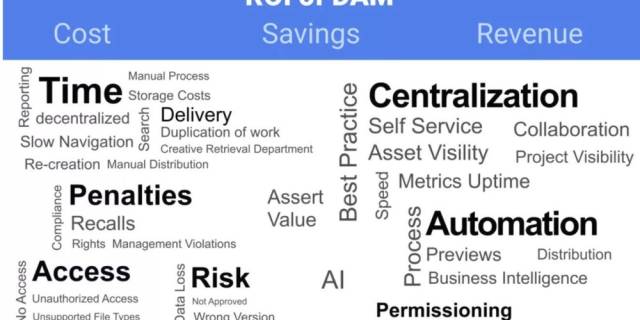
The importance of a holistic approach when implementing a DAM system.
Discover in our blog why it may be misleading to focus solely on return on investment (ROI) and why the real relevance of DAM lies in minimizing risk and increasing efficiency.
In this blog, we have taken a look at a provocative article by DAM expert David Diamond. Digital asset management (DAM) systems are an essential tool that helps companies protect their digital investments and minimize their liability. However, looking at the return on investment (ROI) should not be the only decision factor when implementing a DAM system.
Is looking at ROI a fallacy?
The ROI of a DAM system is often calculated with the argument that it saves employees X hours per week by using a system. However, this approach neglects the actual importance of DAM and content management. It's not about making individuals' lives easier, but rather about protecting the company's investment and minimizing liability and risk.
The truth is, using a DAM system does not necessarily save time. On the contrary, managing content through the DAM system can actually slow down individual work processes, as additional steps need to be taken to store content, add metadata and generate links.
The key takeaway is that the benefits of careful content management are not about individual time savings, but about the benefits to the organization as a whole. It's about protecting the organization from risk and increasing efficiency in handling digital content.
The true meaning of DAM: reducing risk and increasing efficiency.
The expert Diamond presents convincing arguments that make it clear that the real importance of DAM lies in reducing risk and increasing efficiency. He presents four ROI justifications that illustrate the essential importance of DAM:
The million dollar laptop: when content is stored exclusively on individual devices, the risk of data loss and theft increases significantly. A DAM system helps to protect valuable digital content and protect the company from significant financial losses.
Workflow communication: A DAM system enables more efficient communication and collaboration within the company by allowing employees to track the progress of projects. This contributes to the timely completion of tasks and minimizes delays.
Legal security: Through the clear and transparent management of licenses and usage rights, a DAM system helps to minimize legal risks and protect against costly legal disputes that can result from the incorrect use of content.
Optimization of content acquisition and usage: A well-configured DAM system enables companies to use their digital assets effectively by distributing content across different channels and partners. This contributes to a better return on investment when using content.
Our conclusion: The goal of a DAM system should be long-term oriented, as it aims to protect the company from risks and create a solid basis for the efficient management of digital content and smooth workflows. The importance of DAM lies in the safeguarding and efficient use of digital resources for the long-term success of the company.